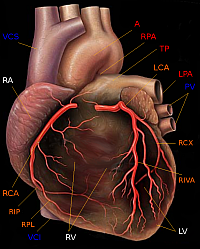Researchers at the Max Planck Institute for Heart and Lung Research in Bad Nauheim, Germany have found a protein that stimulates regression of individual heart muscle cells into their precursor cells, a step required for self-generated healing of damaged heart tissue. The Max Planck Institute, with colleagues from the Schüchtermann Klinik in Bad Rothenfelde, published their findings this month in the journal Cell Stem Cell (paid subscription required).
Heart muscle damaged by a myocardial infarction (heart attack), must be replaced by healthy tissue. Simpler animal species, like the salamander, have a process that allows healthy heart muscle to regress back into its embryonic state, a process called dedifferentiation. The process produces cells that contain a series of stem cell markers leading to conversion into healthy heart tissue.
Humans lack this capability, which became the focus of research by the Max Planck Institute’s Thomas Braun. His research group discovered the protein oncostatin M in high concentrations in tissue samples from the hearts of patients suffering from myocardial infarction.
Oncostatin M was already known to be responsible for the dedifferentiation of different cell types. Braun and his colleagues treated cultivated heart muscle cells with oncostatin M in the lab and then traced the regression of the cells live under the microscope.
Braun’s team was then able to stimulate repair of damaged heart muscle tissue in mice with myocardial infarction. They tested oncostatin M on two groups of mice with heart damage, one set that had been genetically modified to eliminate effects of oncostatin M, and another non-engineered set.
“The difference between the two groups was astonishing,” says Braun. In the group in which oncostatin M was allowed to work, almost all animals survived after four weeks. Among the genetically modified mice, however, 40 percent had died from the heart damage, giving clear statistical evidence of the protein’s effect.
Before moving oncostatin M into clinical studies, researchers need to address a problem with the protein, namely its capacity to exacerbate the damage in a chronically diseased heart. “What we now need is to be able to pinpoint the precise window of application to prevent any possible negative effects,” says Braun.
Read more: Adult Stem Cells Help Cardiac Function in Angina Patients
* * *


 RSS - Posts
RSS - Posts
[…] Protein Discovered That Enables Heart Tissue Repair | Science Business Researchers at the Max Planck Institute for Heart and Lung Research found a protein that stimulates cells needed for self-healing of damaged heart tissue. Source: sciencebusiness.technewslit.com […]